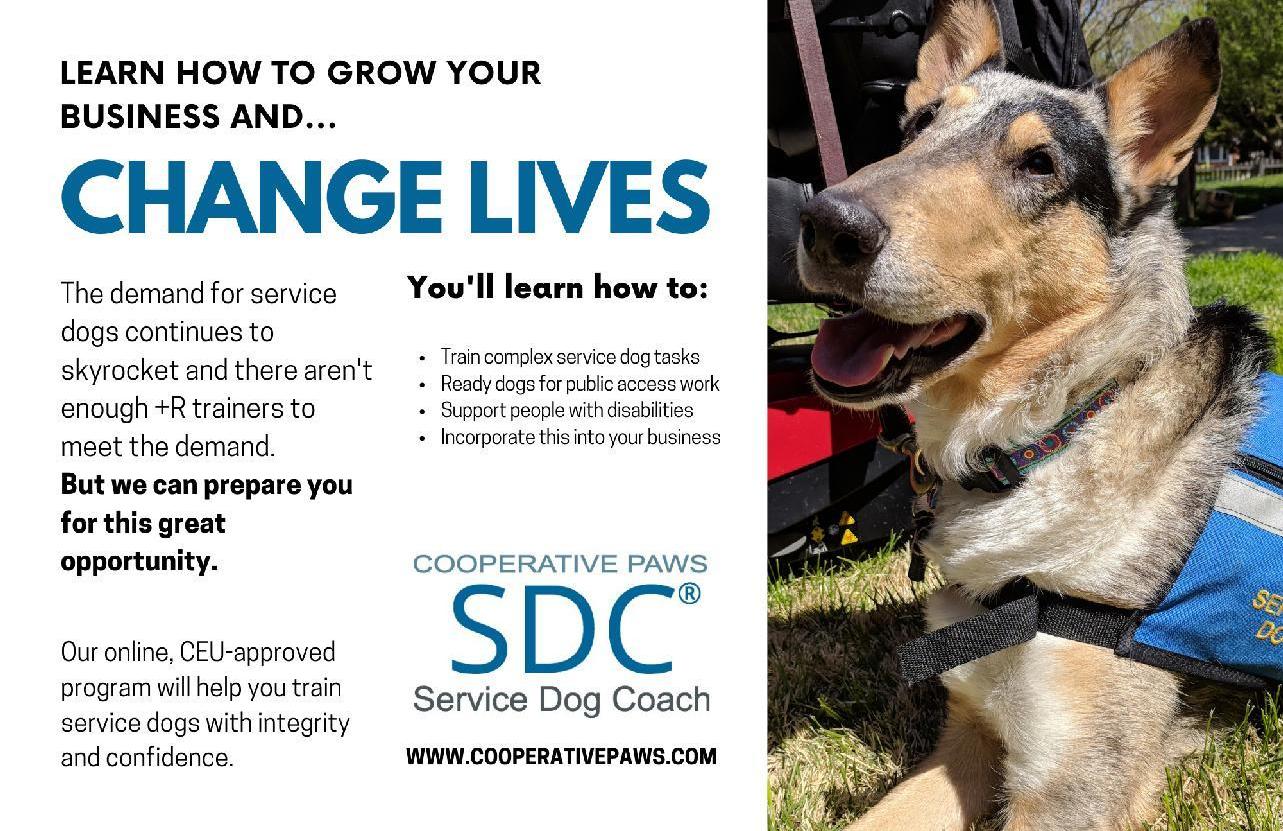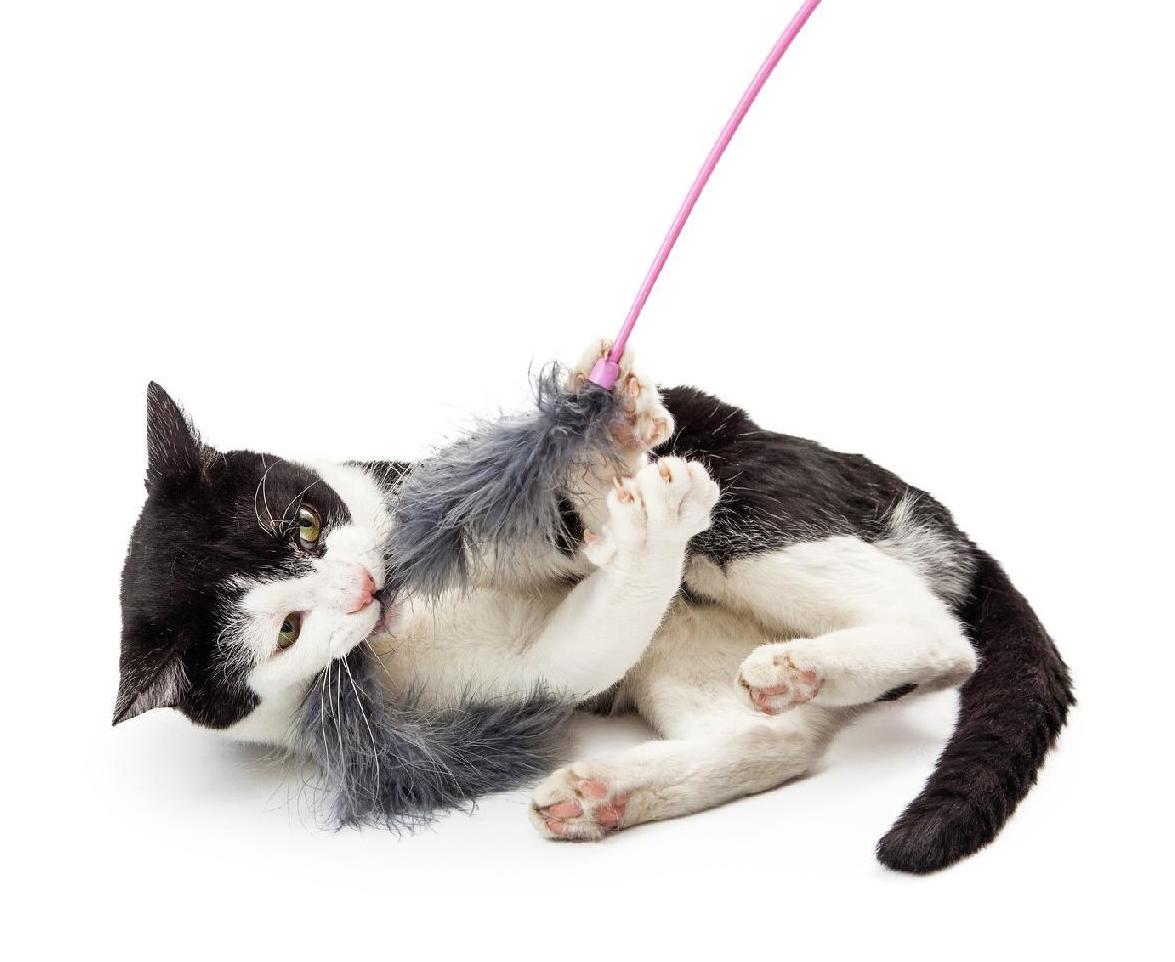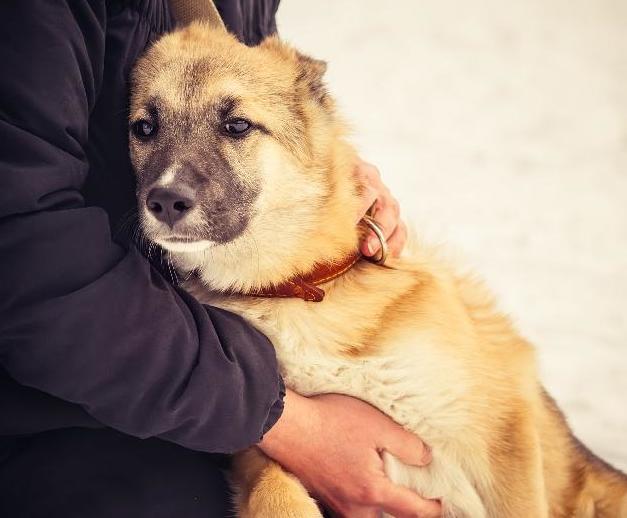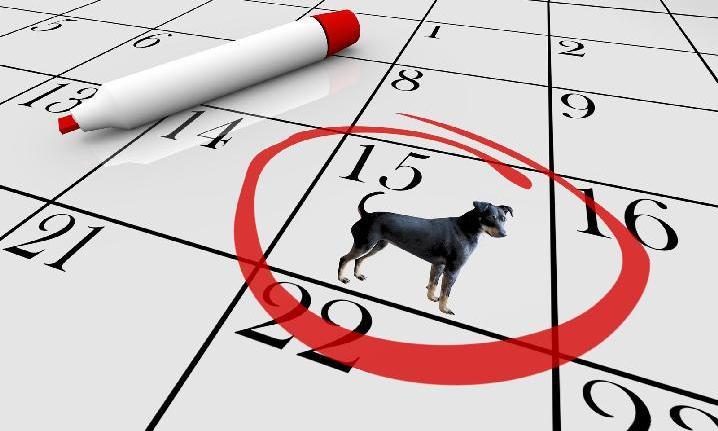
7 minute read
dog’s behavior
t r a i n i n g Alone Training
Don Hanson discusses training options aimed at helping dogs learn to cope with being alone and, consequently, prevent separation anxiety
Advertisement
Dogs are social animals, and most will actively seek out our companionship. They can quickly become accustomed to having their people around all the time (especially during these pandemic times when many of us are spending more time at home than usual), but this is not a necessarily good thing if they will need to spend some time on their own at some stage. And as much as we might want to believe we will always be with our dogs all the time, that scenario is improbable.
Whenever a new dog is brought into a home, especially a playful puppy, people tend to interact with them constantly. This interaction is an essential part of socialization and bonding. Because it is so enjoyable for both the people and the puppy, they interact often. As we know, behavior that is rewarded will be repeated so if all parties are enjoying the interaction – which is pretty standard in this case – then they are both being rewarded.
It’s important for puppy guardians to make sure they are not setting up their puppy for a big disappointment – not to mention a stressful or frightening experience – when they must eventually leave him home alone. As such, including some “alone training” right from the start is of enormous benefit to both puppy and guardian.
Older dogs, depending on their previous circumstances, might also need to learn how to cope with being alone. For example, dogs who were housed in a shelter or kennel situation where other dogs and people were always around may have trouble coping with being by themselves. Senior dogs who have dealt with being alone just fine in the past may start to become anxious when their guardians leave. Dogs that have not learned to cope with being alone can become frightened. Their anxiety may trigger them to exhibit extreme vocalizations and/or destructive behavior. Such dogs may be diagnosed by a veterinarian or veterinary behaviorist with separation anxiety. Separation anxiety will not resolve on its
Dogs that have not learned to cope with being alone can become anxious or fearful when they are suddenly left on their own
© Can Stock Photo / adogslifephoto
Teaching Puppy to Cope with Being Alone
If you have not already done so, start leaving your puppy/dog alone for brief durations throughout the day. He needs to learn that: 1) People are not always around. 2) That you will come back.
You may be surprised to learn that your puppy eventually discovers crate time is perfect for some muchneeded napping!
Here are the steps involved in alone training: • Place your puppy’s crate in a part of the house where you can still hear him, but where he will not be disturbed by family members or other pets in the house. • Take your puppy out to go to the bathroom immediately before putting him in the crate. That way, if he immediately starts to whine, it is not because he needs to urinate or defecate. • Provide your puppy with a safe toy, such as a Kong stuffed with a small portion of his kibble, to keep him occupied while in the crate. • Do not make a big deal out of leaving. Just pop the puppy in his crate and leave the room. He may start to whine or bark when you leave. Such vocalization is normal for a puppy that has not yet learned to cope with being left alone. Your first impulse may be to return and try to calm him. However, that would be counterproductive. Make sure you do not reward him for whining, so try not to pay attention to him while he's vocalizing and do not let him out of the crate until there is a lull in the whining. Reward him for being calm and quiet. • The first time you leave your puppy alone, wait for him to be quiet for at least five minutes before you let him out of the crate. • When returning to your puppy, be very lowkey and nonemotional. If you make leaving or returning into too big of a deal, with lots of cuddling and petting, your puppy is more likely to be stressed by your arrivals and departures. • As always, when letting your puppy out of his crate, take him outside to see if he needs to go to the bathroom. • Practice the above steps at least once a day for several days. You will gradually increase the length of time your puppy can be left alone. Like all training, we want to work in small achievable increments that the dog can handle. If your dog/puppy is not housetrained, you will still need to take him out for bathroom breaks. Do not worry about him not getting enough exercise. On average, a dog sleeps 17 hours per day (although, of course, no dog should be crated or left alone for 17 consecutive hours a day!). You will have plenty of time to give the puppy exercise and to interact with him during the remainder of the day. • Your goal is to eventually to be able to leave your adult dog alone in your home, without you worrying about him becoming anxious or destructive. The more youwork on this while your dog is young, the quicker you will get there.
own and typically requires a behavior modification program and possibly medication too. The goal of alone training is to prevent this from occurring.
Separation Anxiety
If your puppy/dog starts to whine or bark when you leave home, this is quite normal. Your first impulse may be to return to try to calm him. This would be counterproductive, however (see box on opposite page). Leaving your puppy/dog at home, at the veterinarian, at the groomer, or a boarding kennel should be a very lowkey, nonemotional event. Likewise, the same applies when returning to your pet. If you make leaving or returning into a big deal with lots of attention, cuddling and petting, he may be more likely to view your arrivals and departures as stressful events.
Start your alone training by building time slowly. Five to 10 minutes is a good place to start if your dog has never been out of your sight or away from you for that length of time. Like all training, we want to work in small, achievable increments that the dog can handle. Continue leaving your puppy/dog alone for longer and longer periods of time and try to avoid going beyond his threshold. It’s important not to rush the process.
If your dog already exhibits destructive behaviors such as digging, scratching or chewing on himself, house soiling, destruction of objects, extreme vocalization, constant pacing, digging and scratching at exits such as doors and windows in an attempt to reach you, and following you excessively, never letting you out of sight, then you should immediately reach out to your forcefree training and behavior consultant as well as discuss this situation with the dog’s veterinarian. Such behaviors may be symptoms of separation anxiety and may require treatment with appropriate medications and a behavior modification program specific to the disorder.
Resolving separation anxiety will typically involve changes in your family’s behavior in addition to your dog’s. It is typically not an easy problem to resolve and can become more difficult to resolve the longer it goes on. This is why teaching your dog to cope with being alone is an excellent investment of your time. n
Resources
DeMartini, M. (2017). Why and How Dogs Develop Separation Anxiety Green Acres Kennel Shop. (2017). Separation Anxiety with Dr. David Cloutier from Veazie Veterinary Clinic [Podcast] Hayward, T. (2016, May). Home Alone: The Painful Puzzle. BARKS from the Guild (18) 14-19. Hayward, T. (2017). Separation Anxiety: When Alone Time Makes Your Puppy Panic Naismith, J. (2017). Partying or panicking? How to be a separation anxiety sleuth. BARKS Blog
Don Hanson is the co-owner of the Green Acres Kennel Shop in Bangor, Maine. He is a Bach Foundation registered animal practitioner (BFRAP), certified dog behavior consultant (CDBC), associate certified cat behavior consultant (ACCBC) and a certified professional dog trainer (CPDT-KA) and also produces and co-hosts a weekly radio show and podcast, The Woof Meow Show on The Pulse AM620 WZON. He writes about pets on his blog and is co-chairman of PPG’s Advocacy Committee.











